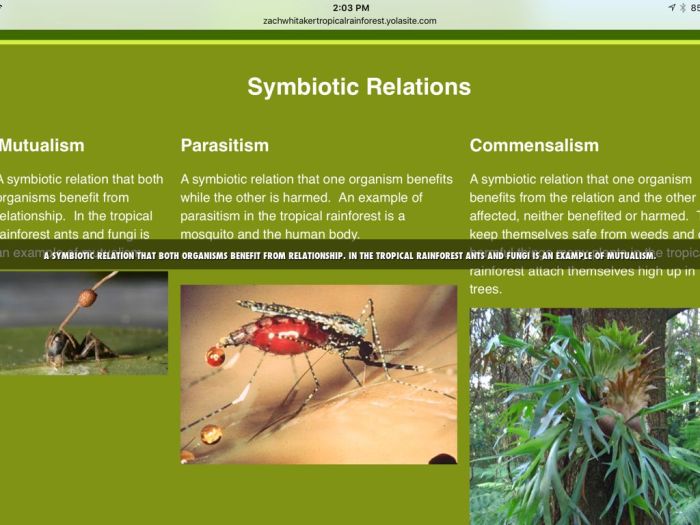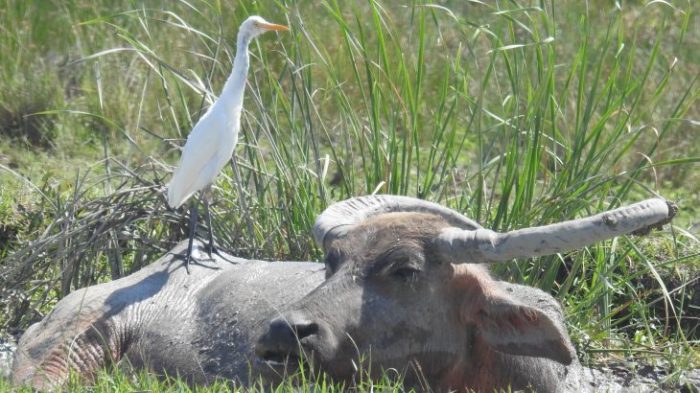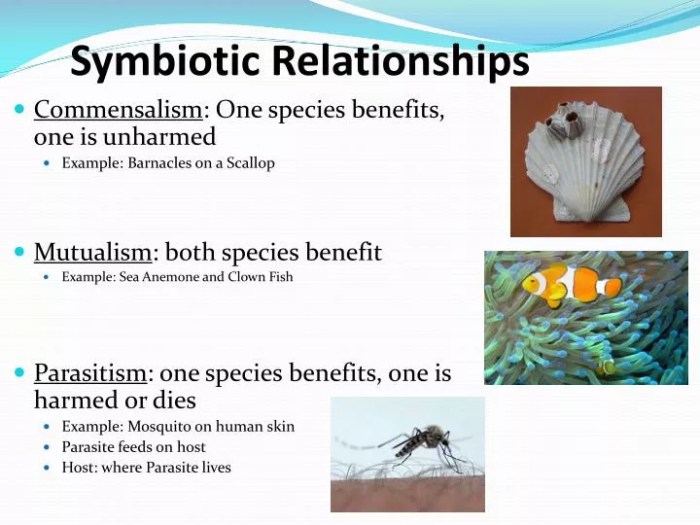Delving into the realm of symbiotic relationships in a rainforest, we uncover a fascinating tapestry of interdependence, where species forge intricate alliances and engage in a delicate dance of survival. From mutualistic partnerships to parasitic exploits, these relationships shape the rainforest ecosystem in profound ways, influencing biodiversity, stability, and the very fabric of life within this verdant realm.
Mutualistic relationships, where both species benefit, form the cornerstone of rainforest stability. Commensalism, on the other hand, offers advantages to one species without affecting the other. Parasitism, a more adversarial relationship, involves one species exploiting another for its own survival.
Predation and competition further add to the dynamic interplay of species within the rainforest, driving adaptations and shaping ecological niches.
Symbiotic Relationships in a Rainforest

Rainforests are complex ecosystems that support a vast array of species interacting in diverse and intricate ways. Symbiotic relationships, where two or more species live in close association, play a crucial role in shaping the dynamics of these ecosystems.
Mutualistic Symbiosis
Mutualism is a symbiotic relationship where both species benefit from the association. In rainforests, numerous examples of mutualism exist:
- Pollination:Bees and butterflies rely on nectar from rainforest flowers for food, while the plants benefit from pollination, ensuring reproduction and genetic diversity.
- Mycorrhizal fungi:These fungi form symbiotic relationships with plant roots, providing them with water and nutrients from the soil in exchange for carbohydrates produced by the plants.
- Seed dispersal:Birds and mammals consume rainforest fruits and disperse the seeds through their feces, promoting plant propagation and genetic diversity.
Mutualistic relationships are vital for the stability and functioning of rainforest ecosystems, as they enhance species’ access to resources, facilitate reproduction, and maintain biodiversity.
Commensalism, Symbiotic relationships in a rainforest
Commensalism is a symbiotic relationship where one species benefits from the association while the other is neither harmed nor benefited. In rainforests, commensal relationships include:
- Epiphytes:Plants that grow on the branches of trees, using them as support but not causing harm or benefit to the trees.
- Hitchhikers:Small animals, such as insects or amphibians, that attach themselves to larger animals for transportation or protection.
Commensalism can provide advantages to the beneficiary species, such as increased access to sunlight or protection from predators, while having little impact on the host species.
FAQ Corner
What is the primary benefit of mutualistic relationships in a rainforest?
Mutualistic relationships provide reciprocal benefits to both species involved, enhancing their survival and reproductive success.
How does commensalism differ from mutualism?
In commensalism, one species benefits from the interaction without affecting the other, while in mutualism, both species derive benefits.
What is the role of parasites in the rainforest ecosystem?
Parasites can regulate host populations, influence genetic diversity, and serve as vectors for diseases, impacting the overall health and dynamics of the ecosystem.
How does predation shape rainforest biodiversity?
Predation drives natural selection, favoring traits that enhance prey survival and predator hunting abilities, contributing to the diversification of species within the rainforest.

